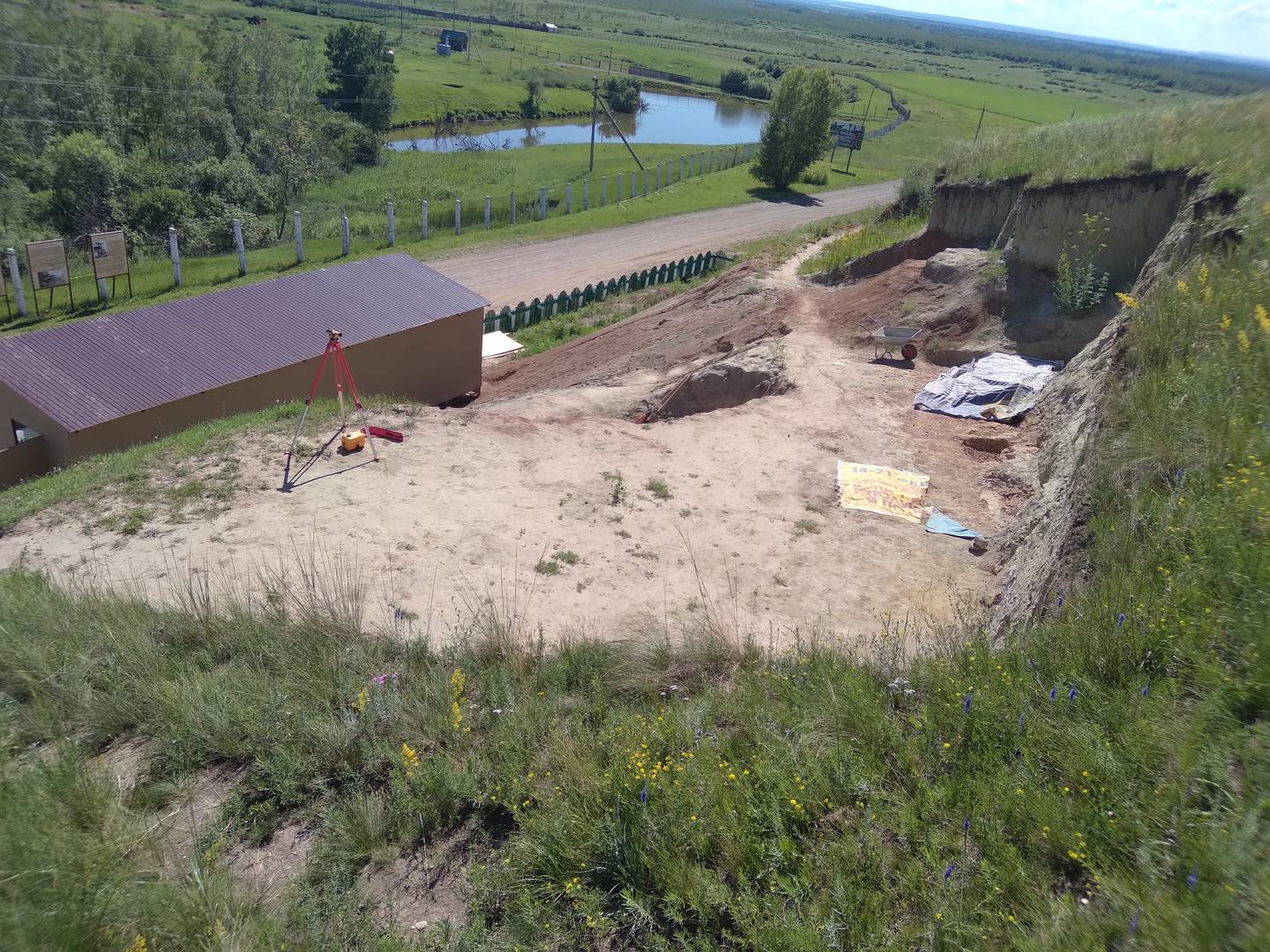
The reconstruction of geographical events that took place in Western Siberia more than 120 million years ago was carried out as a result of a study of sedimentary rocks from the Lower Cretaceous (Ilek Formation), said scientists from the Faculty of Geology and Geography (GGF ) from West Siberian University. Tomsk State University (TSU), the university’s press service reports on March 18.
Scientists were able to discover how the bed of an ancient river changed in this territory, giving rise to oases of dinosaur fauna in the desert. The paleontologists presented the results of the study in the article “Early Cretaceous continental sedimentary environments, paleogeography and biota of southeastern Western Siberia”, published in the journal Geological Society (Q1).
One of the authors of the article, associate professor of the TSU State Faculty of Geology, Stepan Ivantsov, explained that for almost 100 years research has been carried out on Early Cretaceous rocks in the territory of modern Siberia, but only this article provides a general description. of all the scientific data available on this topic.
“The Ilek Formation is distinguished in the southeast of Western Siberia, in the Krasnoyarsk Territory, Kemerovo region. “Our predecessors conducted research there and we have worked there since 1995. A generalization of our data and that of other people showed that the Ilek Formation, in terms of formation conditions, is not as simple as originally thought.”noted the scientist.
After analyzing a wide variety of data, TSU paleontologists revealed the heterogeneity of the Ileksk Formation in terms of the time of its accumulation. They hypothesized that the Cretaceous deposits in the eastern part of the formation are much older than the western ones.
In the formation of Early Cretaceous rocks on the territory of the modern Kemerovo region and the south of the Krasnoyarsk Territory, an ancient river flowing from the mountains surrounding the West Siberian Plain and flowing into the Sea played an important role. from Western Siberia. Scientists consider Shestakovsky Yar, where one of the places where the bones of dinosaurs and many other vertebrates are found, to be a striking example of the evolution of this river.
Originally, this ancient river ran within its valley and had many channels and branches. This type of branched channel is typical of dry landscapes with little vegetation. Subsequently, the surrounding landscape became increasingly flatter, which caused a decrease in the speed and strength of the water flow in it.
As a result, the river bed gradually became meandering (meander), which is also typical for modern Siberian rivers, and also shifted to the southwest (presumably from Krasnoyarsk to Novokuznetsk).
Alexey Faingerts, associate professor of the Department of Paleontology and Historical Geology of the TSU State Department of Geology, said:
“More than one hundred million years ago the climate was much drier and warmer. In the southeast of Western Siberia there was a semi-desert plain with a short rainy season, so the ancient river was a real source of life. Oases with a rich variety of fauna have formed along the river. One of these oases is Shestakovo, where remains of more than 30 species of ancient animals have been discovered. Furthermore, many of them were studied and described for the first time in the world.”
TSU paleontologists found dinosaur remains in Shestakovo, called Siberian psittacosaurus and sibirotitan sauropod. But there, on the site of an ancient oasis walled by sedimentary rocks, remains of birds, turtles, ancient crocodiles and two new terrestrial species were discovered; TSU paleontologists named them kiyazukh (in honor of the Kiya River) and tagarosuchus.
Since continental sediments, unlike marine ones, in which hydrocarbons were formed, were of little interest to geologists, who were mainly looking for oil, the Ilek formation, described in 1935, was not sufficiently studied by them in the 20th century.
Therefore, the study of the Ilek formation by TSU scientists in order to reconstruct the conditions of the past of Western Siberia can become a real breakthrough. In 2023, together with employees of the Kuzbass State Museum of Local Lore, they participated in the study of material from a 200-meter well obtained during drilling in Shestakovo.
The resulting core provides a complete section of the Cretaceous deposits, which will allow comparison of data on Shestakovo 1 and Shestakovo 3, the main dinosaur burial sites.
To study this core, an extensive scientific research program is currently being developed that will allow obtaining a large amount of information about the climate of the Early Cretaceous. Scientists hope to find spores and pollen in the core that will reveal a lot about past landscapes.
“There is an idea to make the Shestakovo section a reference for the Ilek formation. After studying 200 meters of core and describing it, my colleagues and I will obtain the so-called stratotype. We can say that this is an opportunity to make history. Like any standard, the stratotype section represents the most characteristic deposits and shows the boundaries with the underlying and overlying rocks. By proposing a stratotype, we visualize our understanding of the Ilek Formation for modern and future geologists, so that there are no discrepancies in the understanding of its composition and volume.””, summed up Stepan Ivantsov.
Source: Rossa Primavera
I am Michael Melvin, an experienced news writer with a passion for uncovering stories and bringing them to the public. I have been working in the news industry for over five years now, and my work has been published on multiple websites. As an author at 24 News Reporters, I cover world section of current events stories that are both informative and captivating to read.
